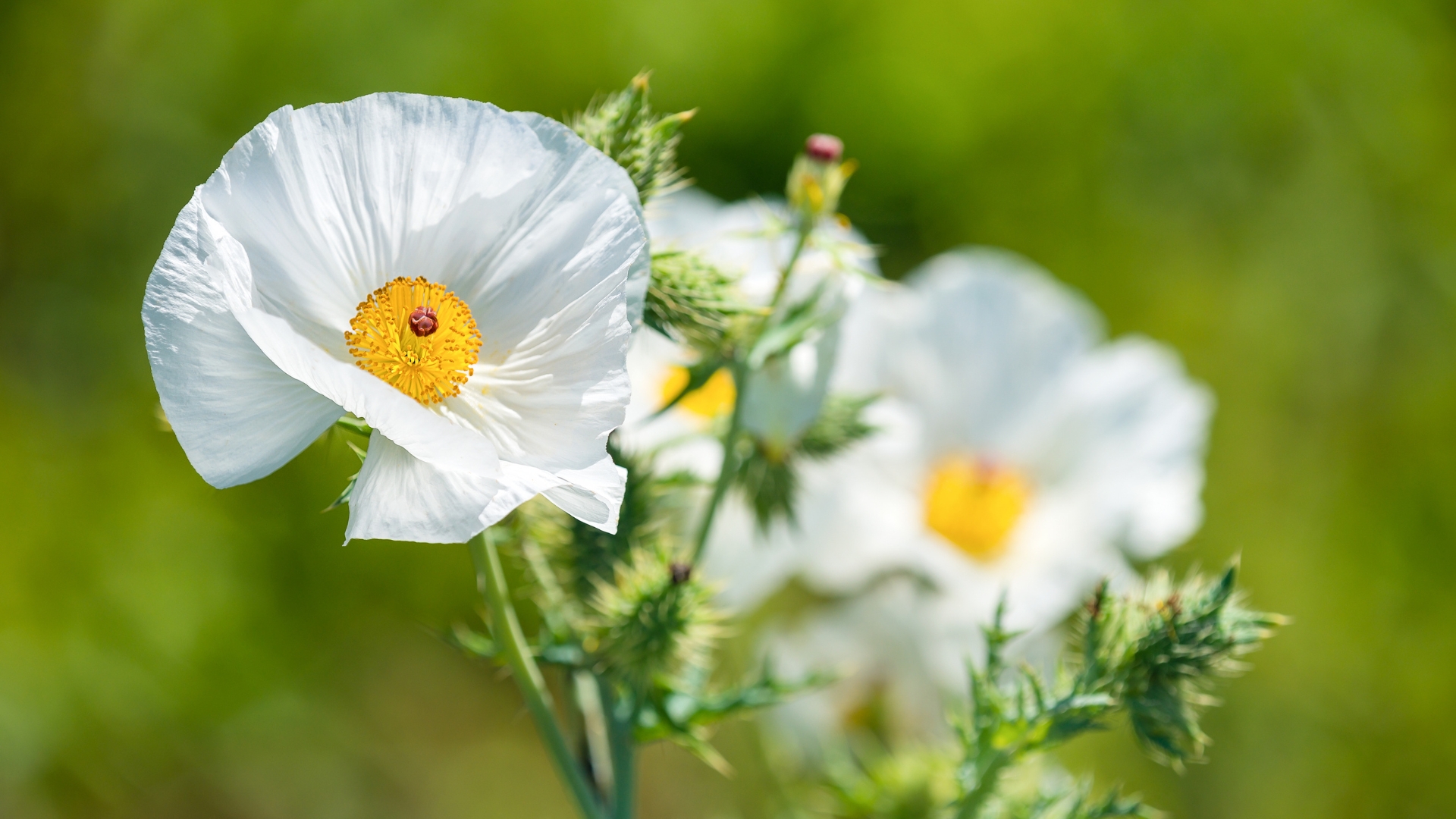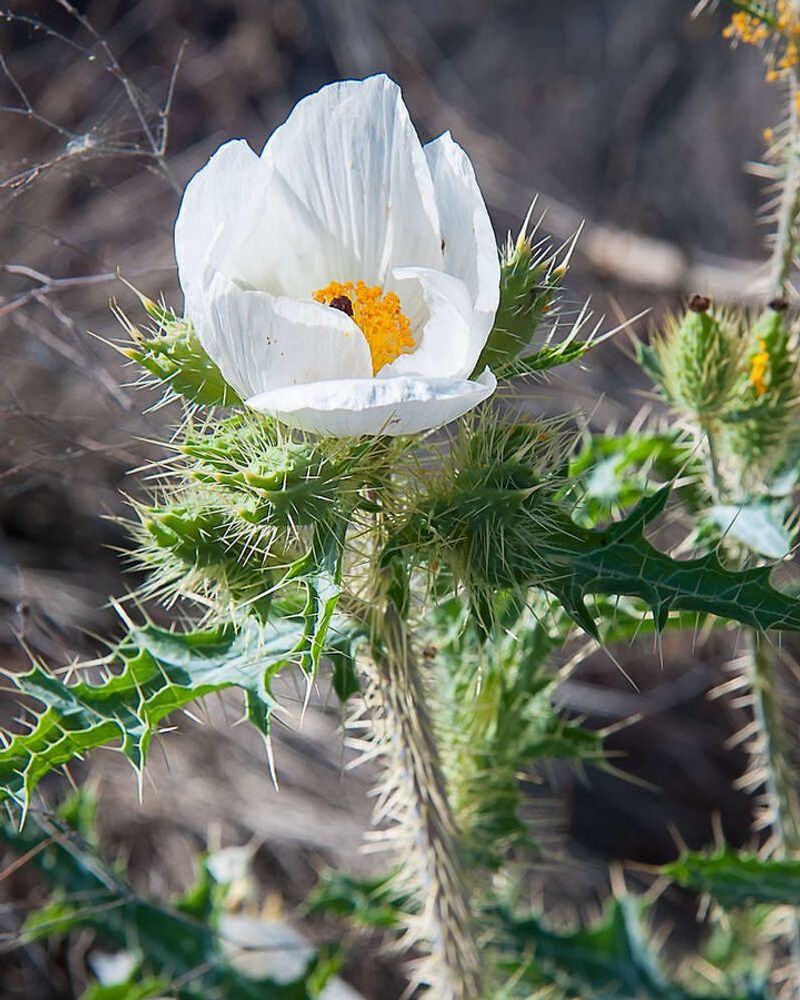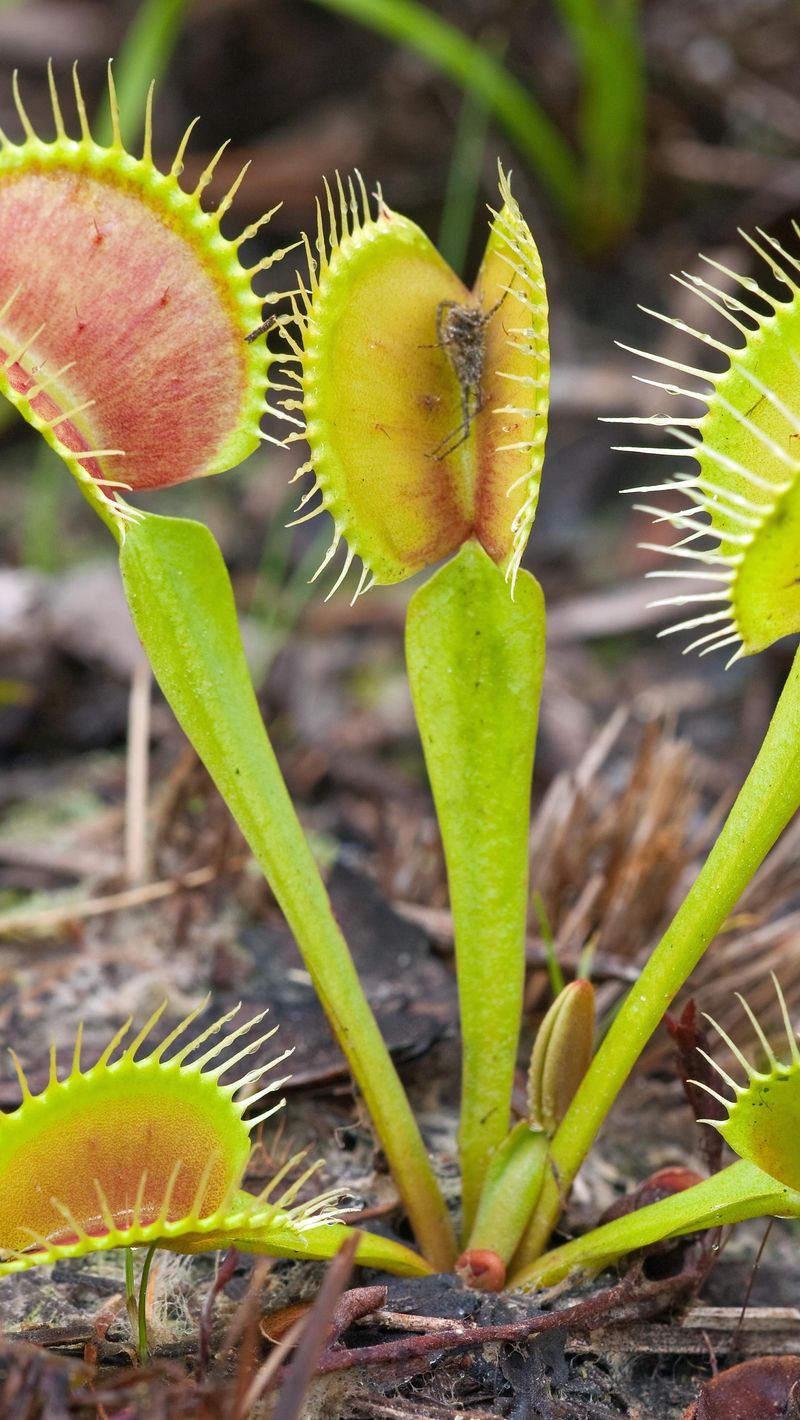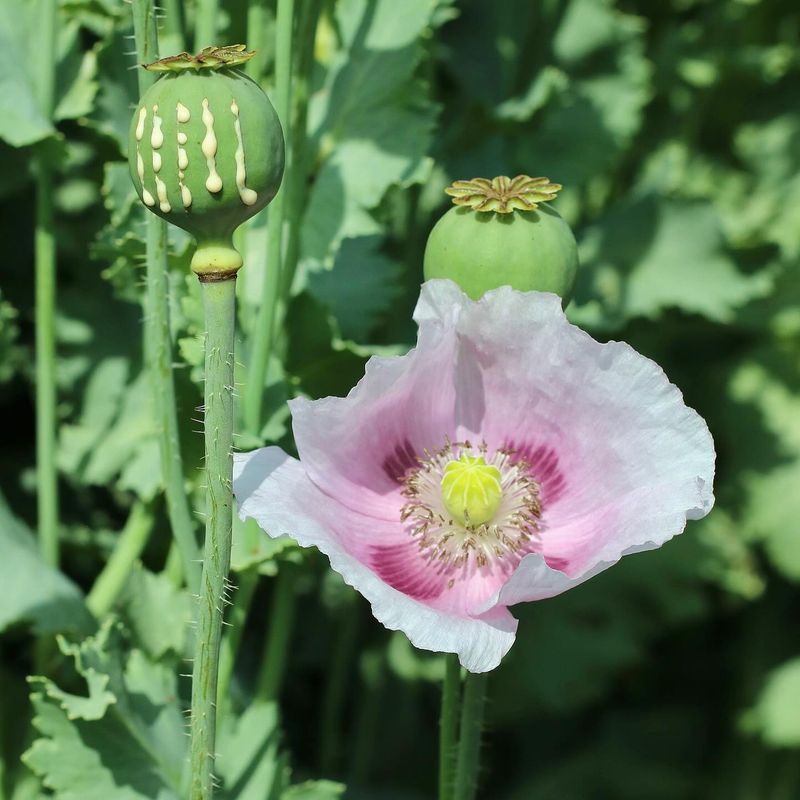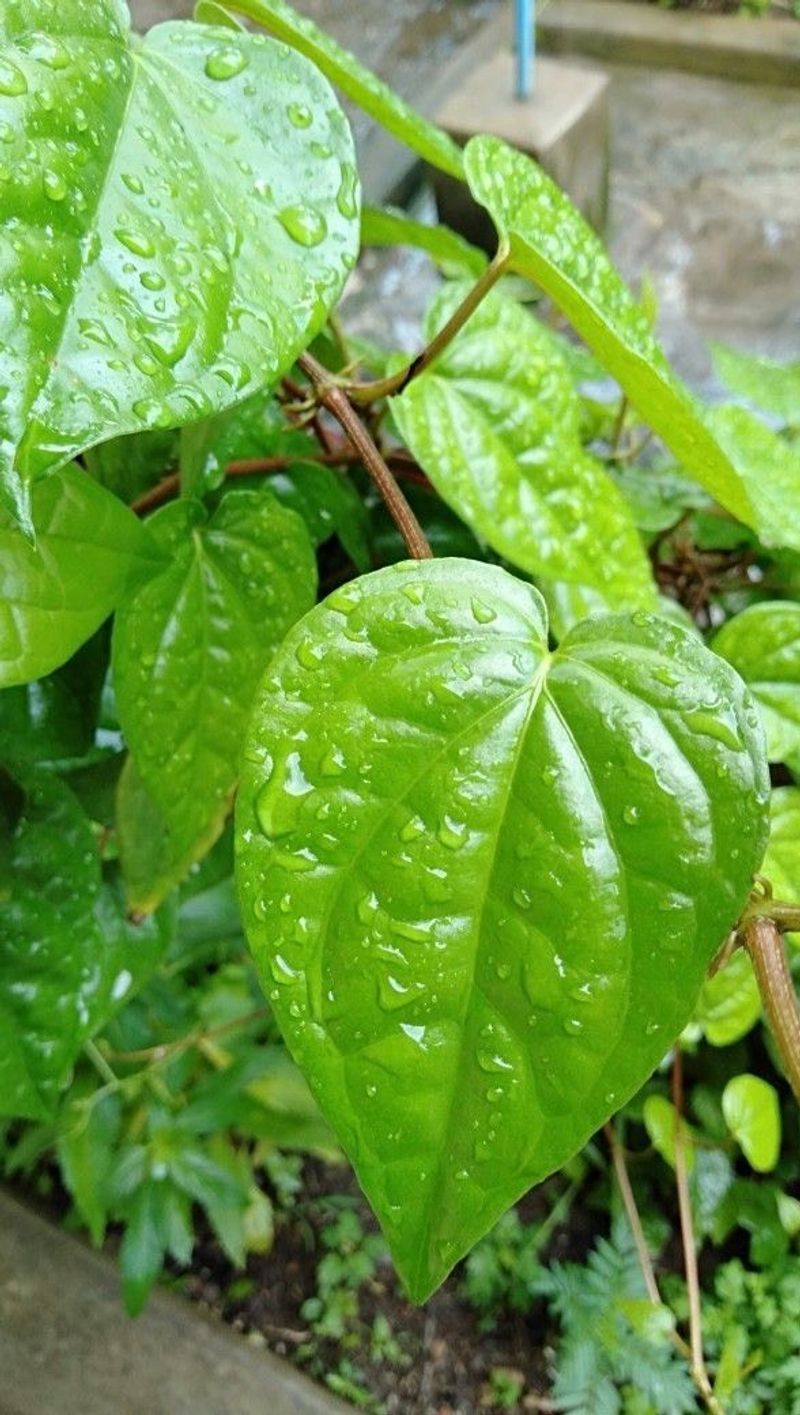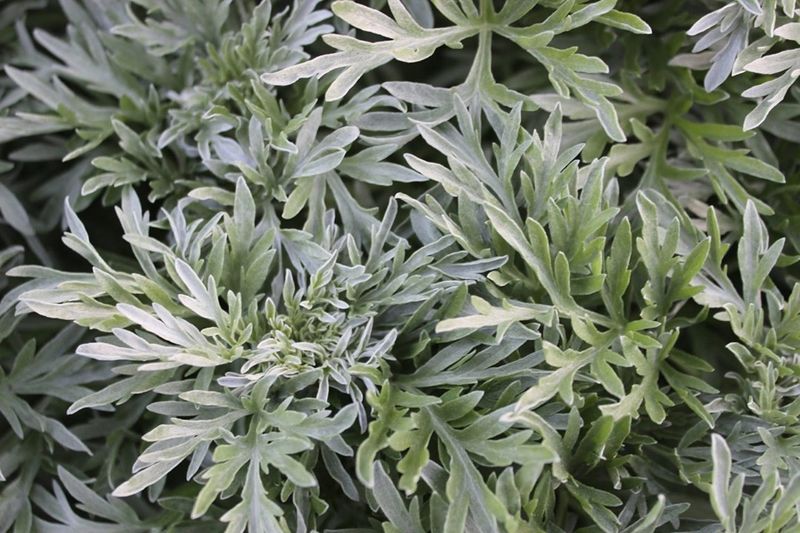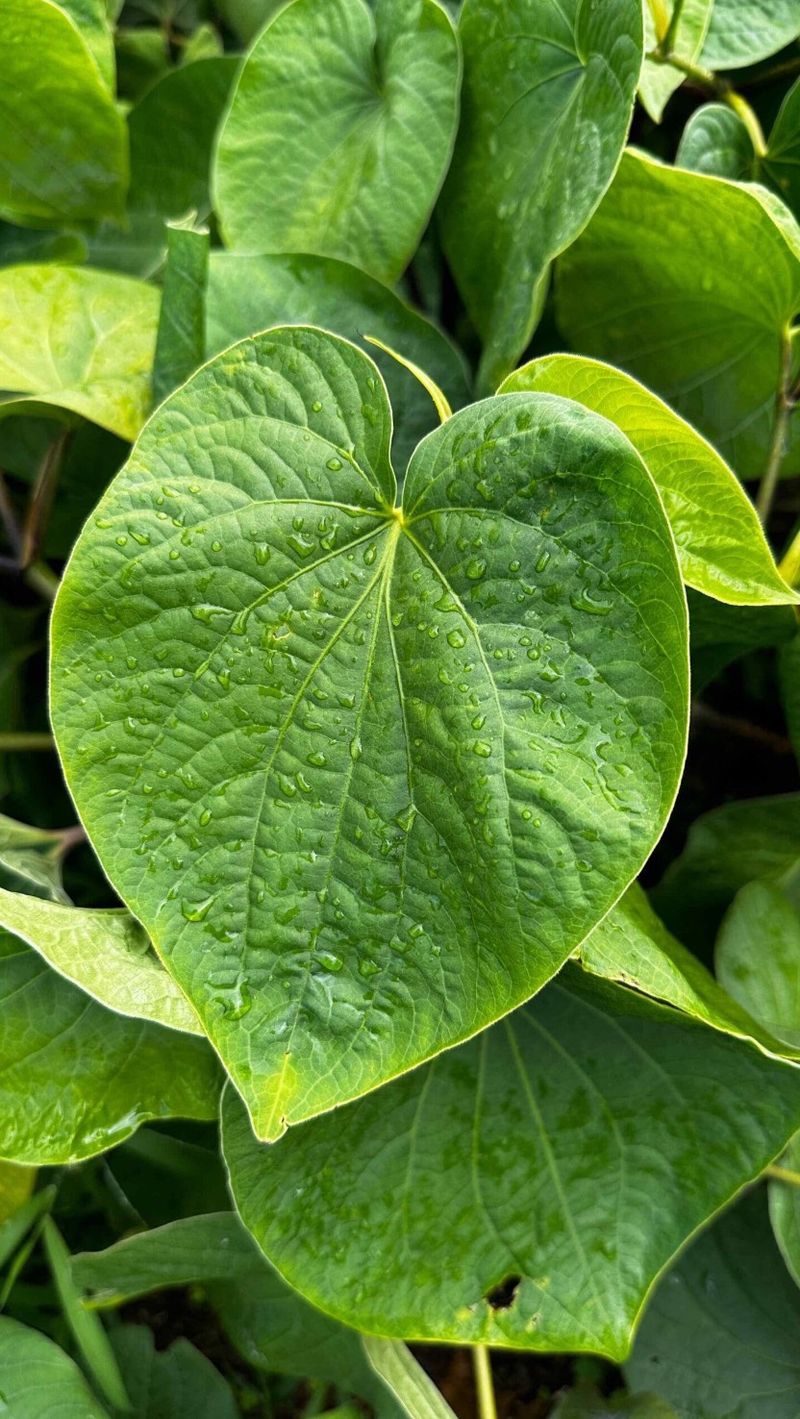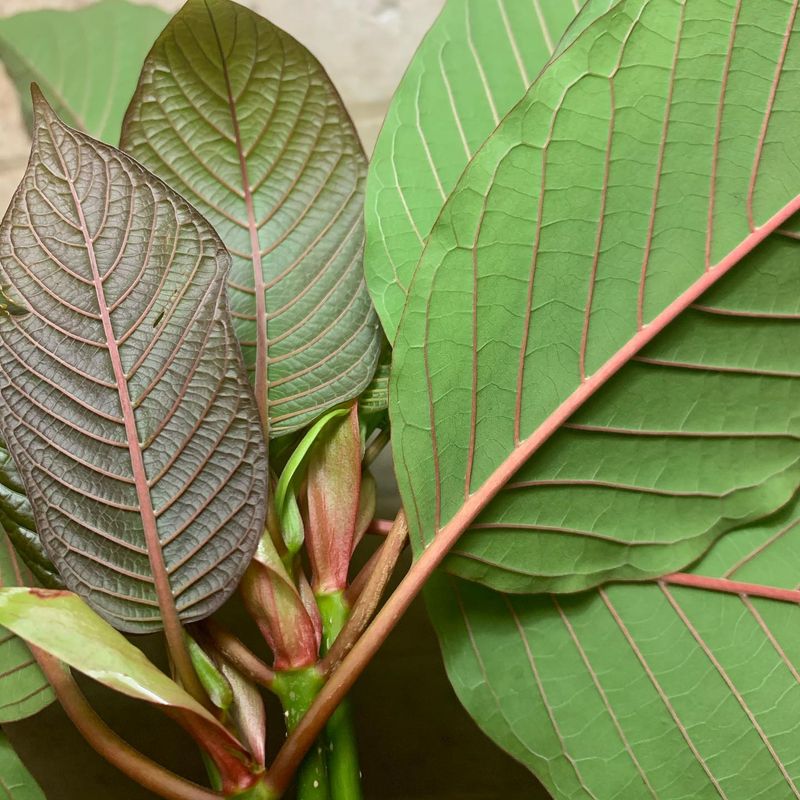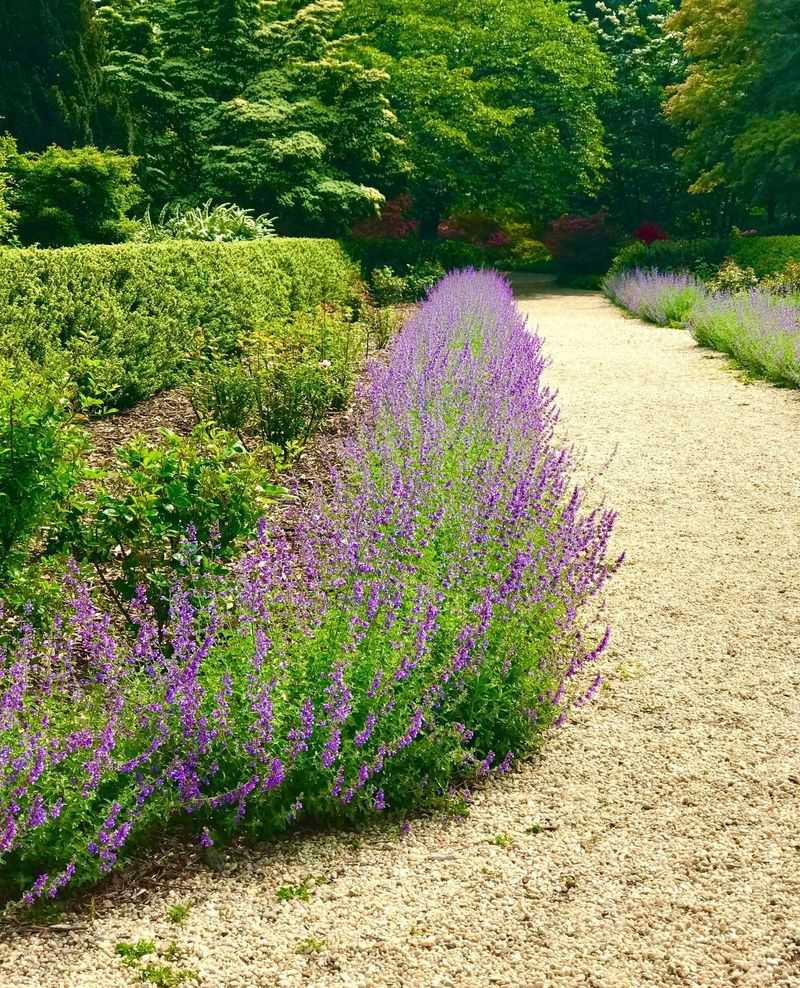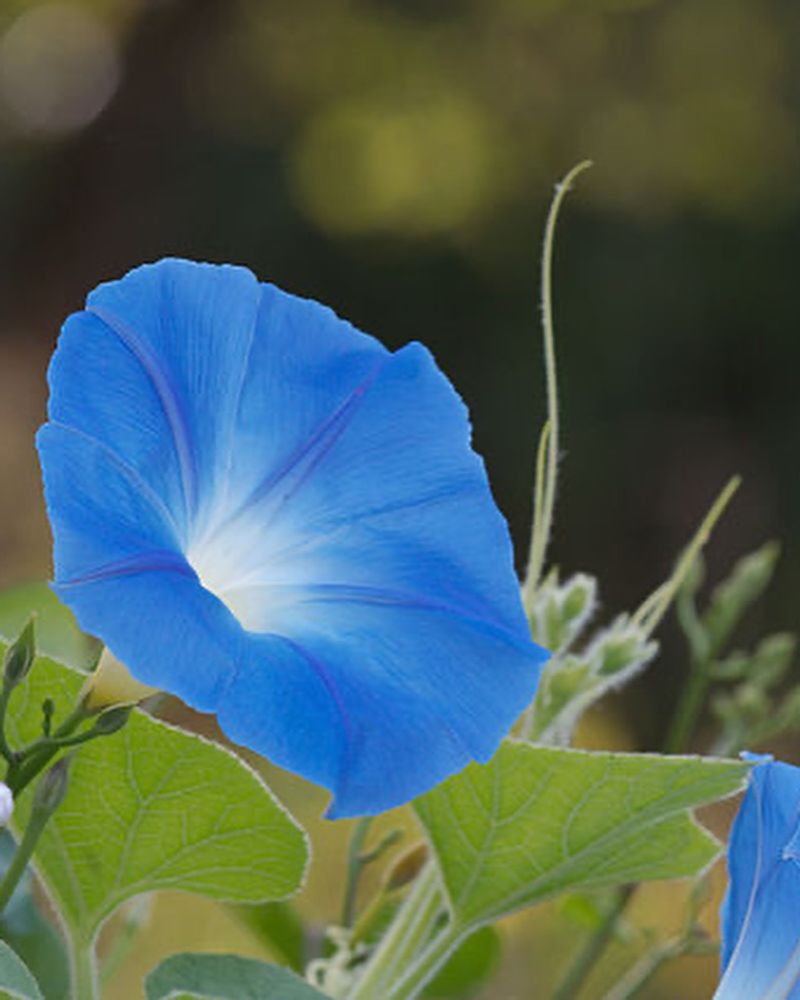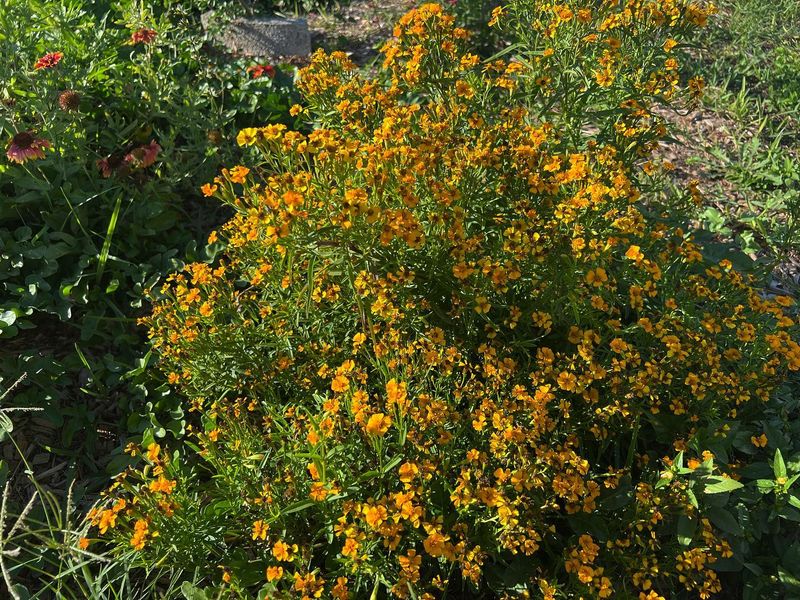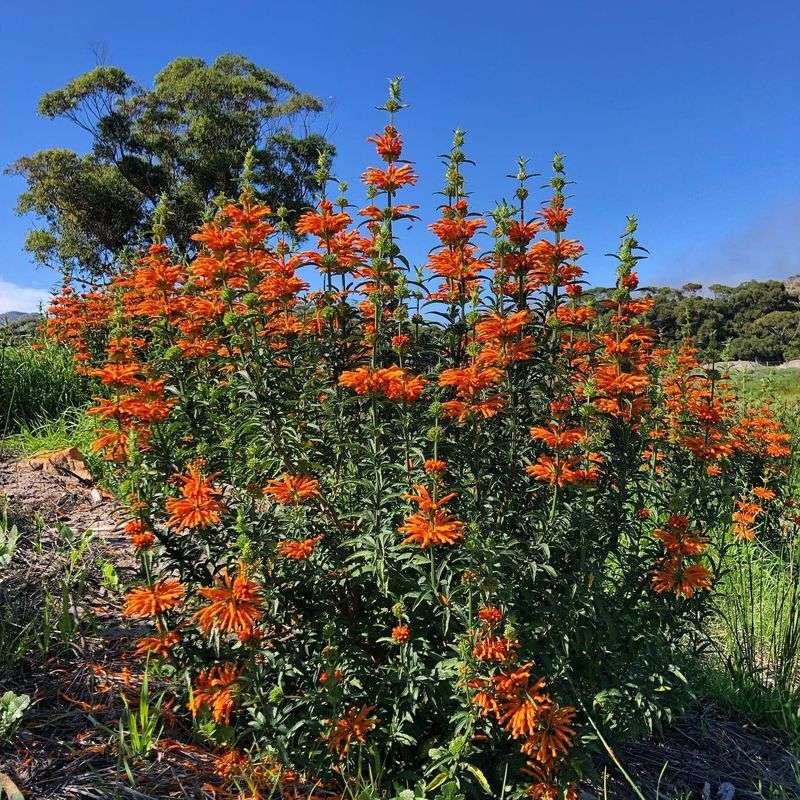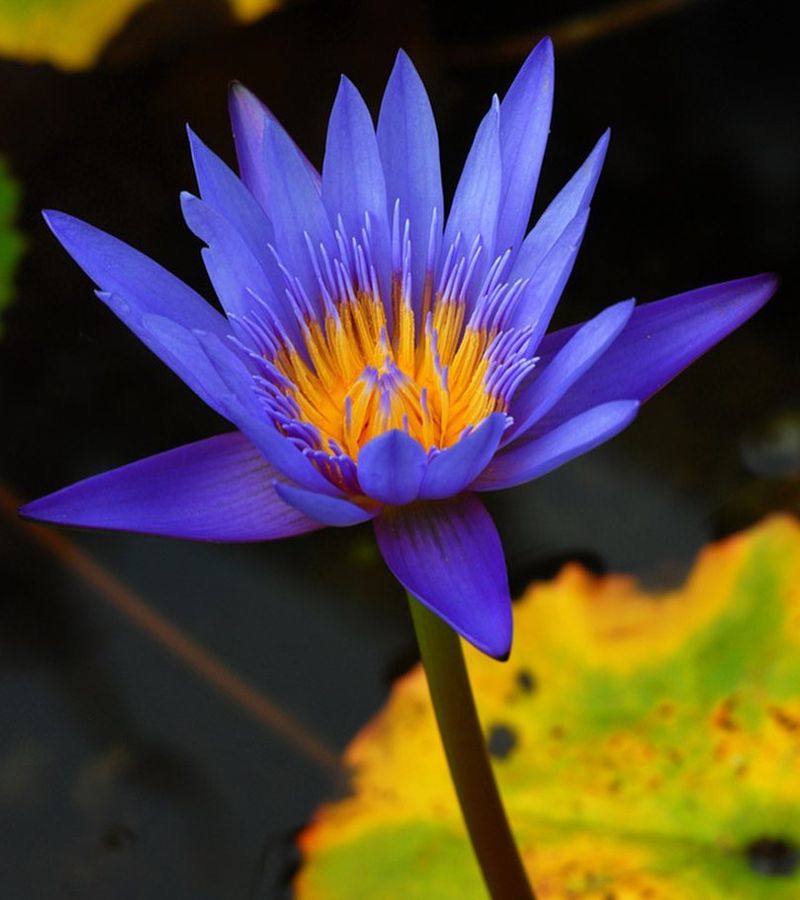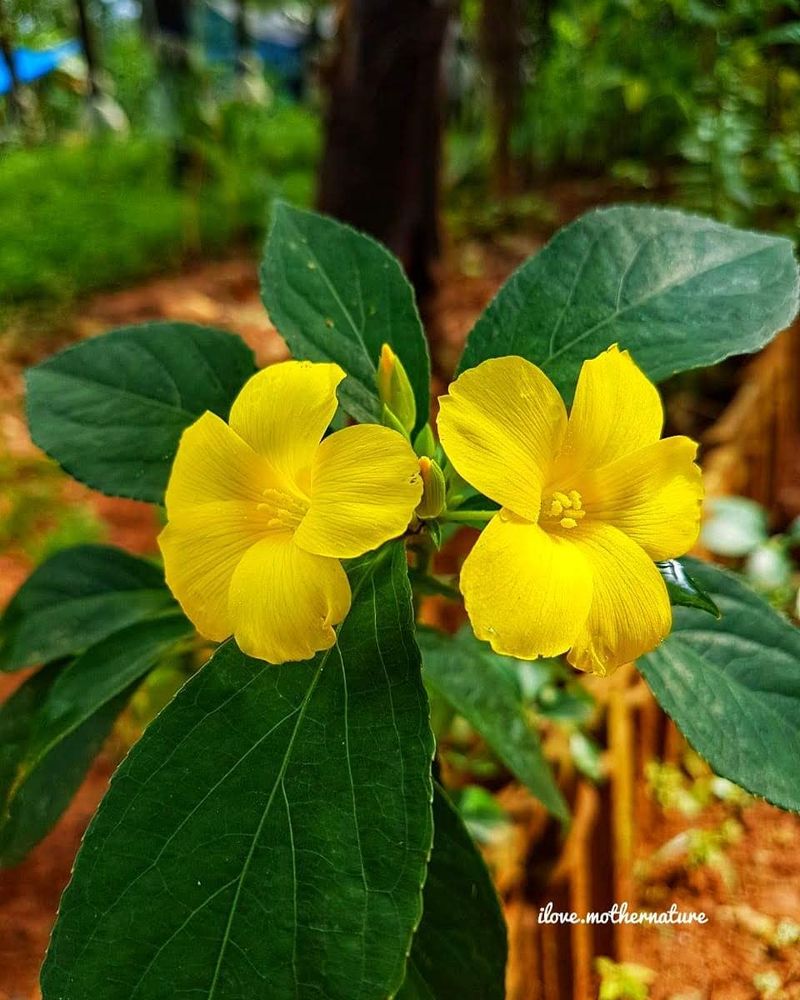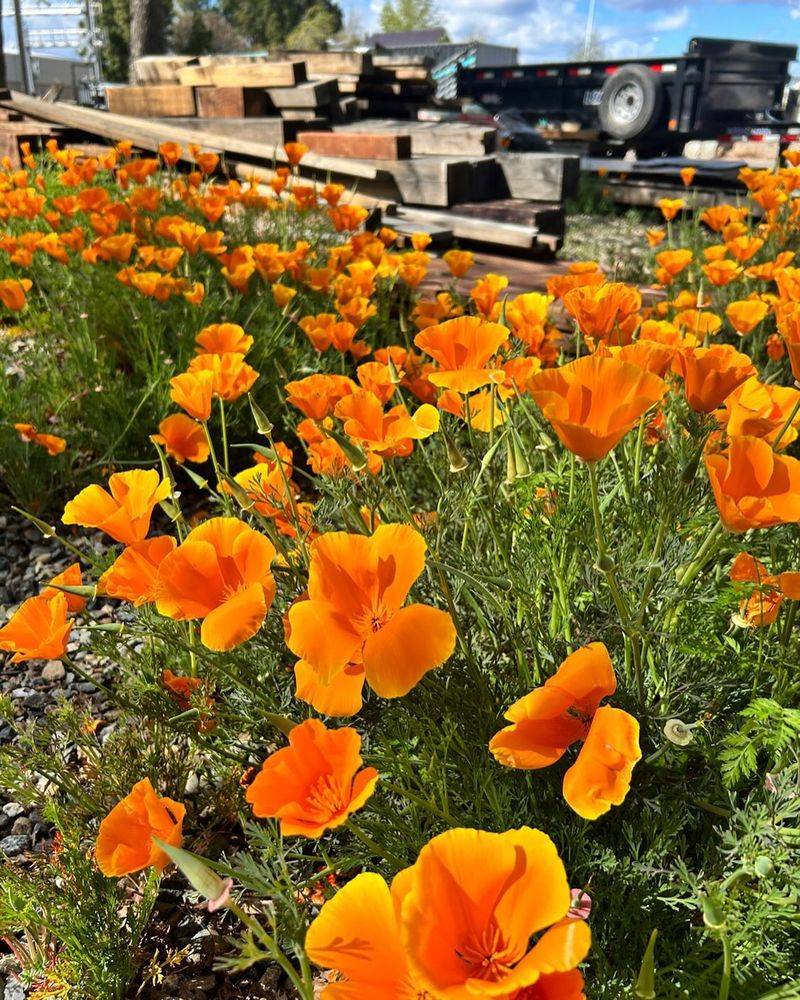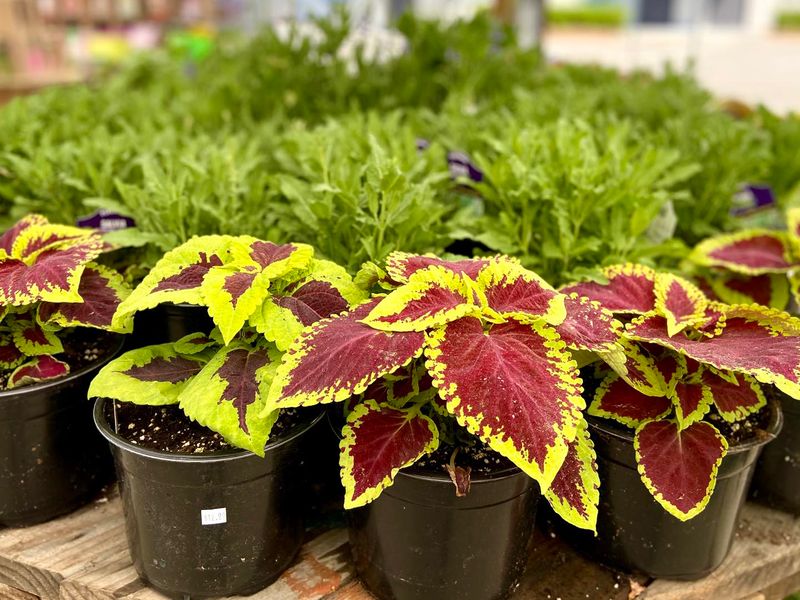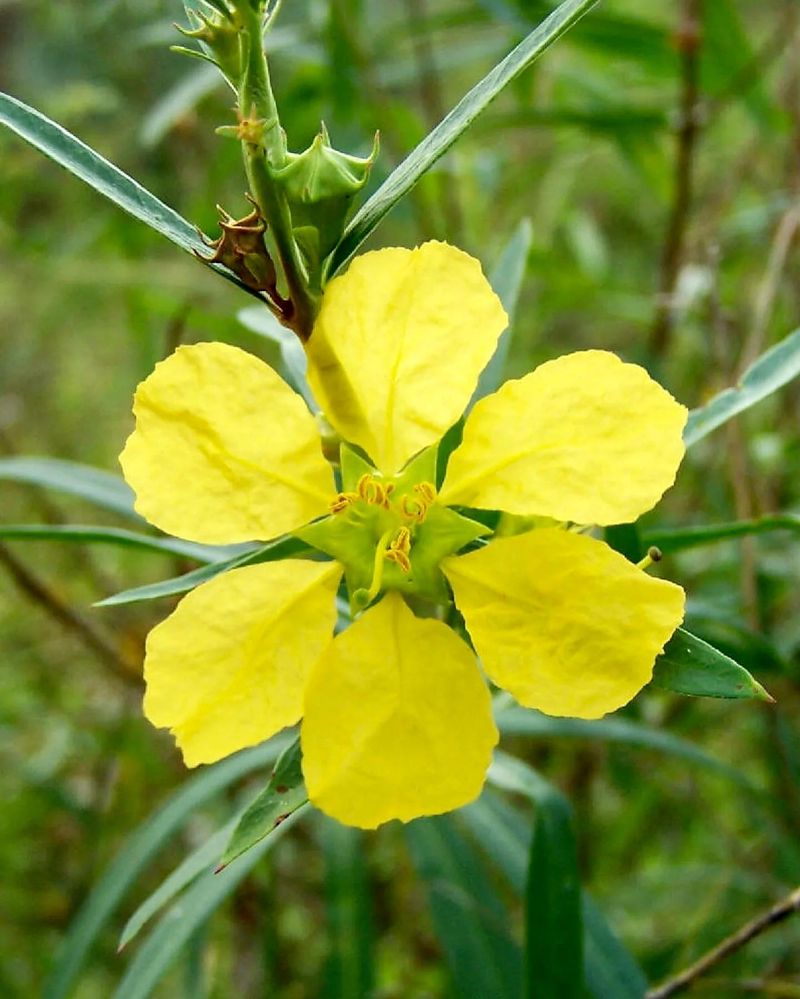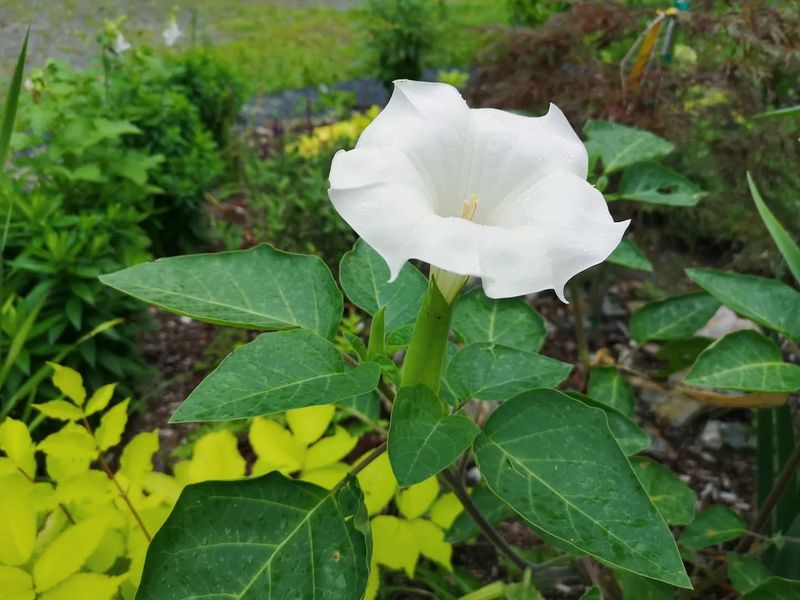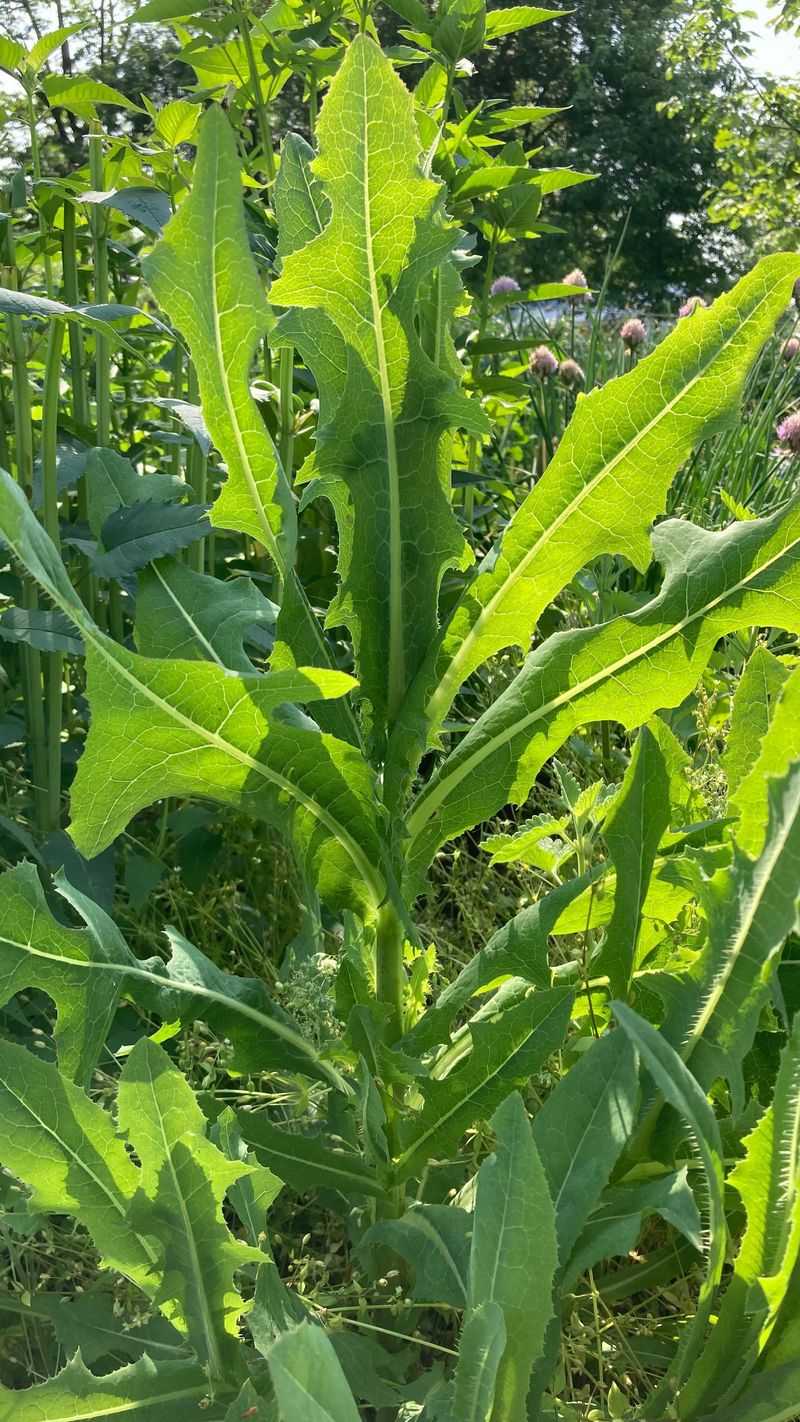I’ve had neighbors do double takes at some of the plants growing in mine—and yes, they’re all perfectly legal. It’s kind of wild what you can grow without breaking a single rule.
Some look exotic, others sound like they shouldn’t be allowed, but they’re totally fair game. I’ve even had friends ask if I was sure they weren’t banned.
So if you’re into growing the unexpected, this list might just surprise you!
1. Prickly Poppy
Often mistaken for its illegal cousin, this stunning white-flowered beauty is perfectly legal to grow across the US. The striking blooms and blue-green foliage make a dramatic statement in dry garden spots.
Native Americans used it medicinally for centuries, though modern gardeners should handle with care due to its prickly stems. Seeds scatter easily, creating natural colonies that attract beneficial pollinators to your garden ecosystem.
2. Venus Flytrap
Contrary to what many believe, these carnivorous conversation-starters are completely legal to grow in your garden or home. The snap-trap leaves catch insects through a fascinating mechanism that still amazes scientists today.
Growing them outdoors works well in humid regions that mimic their native Carolina bog habitats. They prefer acidic soil and plenty of moisture but dislike fertilizer since they get nutrients from their insect meals.
3. Opium Poppy
Surprisingly, these stunning flowers remain legal to grow as ornamentals in most states. Their papery petals in shades of pink, purple, and white create breathtaking garden displays that last through early summer.
The key legal distinction is intent – growing them purely for their beauty is permitted. Gardeners love their distinctive seed pods for dried arrangements. Seeds are perfectly legal and commonly used in baking for that distinctive poppy flavor.
4. Passionflower
The otherworldly blooms of this native vine have been valued for centuries as a natural remedy for anxiety and insomnia. Their intricate purple flowers look almost alien against typical garden backdrops.
Growing wild across the southern United States, passionflower vines thrive with minimal care in home gardens. The edible fruits that follow the flowers provide a tropical treat in warmer regions. Butterflies flock to these vines, making them a wildlife-friendly choice.
5. Betel Leaf
This aromatic vine produces heart-shaped leaves popular in Southeast Asian cuisine and traditional practices. Growing surprisingly well in warm American climates, betel offers unique ornamental value with its glossy foliage.
Many gardeners are unaware this conversational plant is completely legal to grow. The vines require a trellis or support to climb and prefer partial shade in hotter regions. Its peppery flavor makes it an interesting addition to adventurous home chefs’ herb gardens.
6. Wormwood
Made famous by its historical use in absinthe, this silvery-leaved beauty adds dramatic texture to garden borders. The feathery foliage catches sunlight beautifully and releases a distinctive aroma when brushed against.
Growing wormwood requires almost no maintenance once established in well-drained soil. Its natural pest-repelling properties make it a practical companion plant throughout the garden. The plant’s bitter compounds have been used medicinally for centuries to aid digestion.
7. Kava
Few gardeners realize this South Pacific stress-reliever thrives in warm American climates. The star-patterned leaves create a tropical atmosphere in sheltered garden spots or containers.
Valued for centuries in Pacific Island cultures, kava roots develop their characteristic properties after several years of growth. The plant appreciates rich, moist soil and protection from harsh afternoon sun. Container growing allows northern gardeners to bring this conversation piece indoors during winter months.
8. Kratom
This tropical tree with glossy green leaves creates an exotic focal point in frost-free areas. Growing up to 20 feet tall when happy, kratom adds a touch of Thailand to American landscapes.
While controversial in some circles, kratom remains legal to grow in most states. The tree requires consistent moisture and rich soil to thrive. Container growing works well for northern gardeners who can protect it during winter or those with limited space.
9. San Pedro Cactus
With its striking blue-green columns reaching skyward, this architectural cactus makes a dramatic statement in dry gardens. The night-blooming white flowers span nearly a foot across when they appear on mature specimens.
Perfectly legal as an ornamental, San Pedro has been grown in gardens for generations. Native to the Andes mountains, it’s surprisingly cold-tolerant compared to many cacti. Fast-growing under ideal conditions, it can add several feet of height each year in sunny locations.
10. Catnip
Beyond just delighting felines, this mint family member produces beautiful lavender flower spikes that attract beneficial insects. The aromatic leaves release their distinctive scent whenever brushed against, adding sensory interest to garden paths.
Incredibly easy to grow, catnip thrives in poor soil where other plants struggle. Its natural pest-repelling properties make it valuable throughout the garden. Dried leaves can be used in teas with mild calming effects for humans – quite different from its effect on cats!
11. Morning Glory
These vigorous climbing vines produce a daily show of trumpet-shaped blooms in shades from deepest purple to brightest white. The heart-shaped leaves create a dense privacy screen on fences or trellises throughout the growing season.
Despite containing compounds related to LSD, these garden favorites remain completely legal to grow. Seeds readily self-sow, sometimes too enthusiastically for tidy gardeners. Hummingbirds and butterflies flock to the flowers, making them wildlife-friendly additions to any landscape.
12. Mexican Tarragon
Often called Texas tarragon, this anise-flavored herb produces cheery yellow flowers that brighten fall gardens. The licorice-like flavor matches perfectly with traditional French tarragon but grows much better in hot, humid climates.
Butterflies adore the late-season blooms when other nectar sources become scarce. Unlike true tarragon, this look-alike thrives in poor soil and intense heat. The edible flowers make beautiful garnishes for summer drinks and desserts.
13. Wild Dagga
The fuzzy orange tubular flowers of this South African native attract hummingbirds and butterflies by the dozen. Growing into a substantial shrub in warm climates, wild dagga creates a dramatic backdrop for smaller garden plants.
Despite its intimidating name, this mint family member is completely legal to grow nationwide. The dried leaves were traditionally used in teas by various cultures. Drought-tolerant once established, it’s perfect for water-wise gardens in sunny locations.
14. Blue Lotus
Ancient Egyptians revered these star-shaped blue flowers that open at dusk and close by mid-morning. Growing beautifully in water gardens, they spread their round lily pads across the water’s surface throughout summer.
Completely legal to grow, blue lotus makes a fascinating addition to backyard ponds. The flowers emit a subtle vanilla-like fragrance most noticeable in evening gardens. Each bloom lasts several days, closing during daytime and reopening for about three consecutive nights.
15. Damiana
This aromatic shrub produces small yellow flowers followed by fig-like fruits with an interesting spicy-sweet aroma. The refined texture of the leaves creates a delicate appearance in herb gardens or containers.
Growing well in hot, dry conditions, damiana requires excellent drainage to thrive. Traditional cultures throughout Mexico and Central America have valued it for centuries. The dried leaves make an interesting tea with a distinctive flavor profile unlike any common herb.
16. California Poppy
The state flower of California creates drifts of golden orange that seem to capture sunshine itself. Unlike its controversial cousin, this poppy species is completely legal and celebrated nationwide.
Thriving in poor soil with minimal water, these native wildflowers return reliably each spring from self-sown seeds. The ferny blue-green foliage looks attractive even before the flowers appear. Blooms close at night and on cloudy days, reopening when sunshine returns.
17. Coleus
Few gardeners realize these common shade garden favorites have an interesting legal status. The kaleidoscope of leaf patterns and colors creates living art in containers or garden beds without a single flower needed.
Historically used in traditional practices, modern varieties are grown strictly for their decorative foliage. They thrive in everything from full shade to bright sun depending on the variety. Pinching stems regularly encourages bushier growth and more vibrant coloration throughout the growing season.
18. Sinicuichi
The golden-yellow flowers of this unusual shrub brighten garden borders through late summer. Native to Mexico, it grows surprisingly well in warmer regions of the United States with minimal care.
Completely legal to grow, this conversation plant features attractive willow-like foliage that adds textural interest. The plant appreciates regular moisture and rich soil but tolerates less-than-ideal conditions. Butterflies frequently visit the flowers, adding wildlife value to its ornamental qualities.
19. Sacred Datura
Enormous trumpet-shaped white flowers unfurl at dusk, releasing an intoxicating fragrance that carries across evening gardens. The prehistoric-looking spiny seed pods that follow the flowers add structural interest through fall and winter.
Despite its potent nature, this desert native remains legal to grow as an ornamental. The silvery foliage contrasts beautifully with other garden plants. Night-flying moths with incredibly long tongues are the primary pollinators of these moonlight-reflecting blooms.
20. Wild Lettuce
Looking nothing like its grocery store cousin, this tall native plant produces architectural stalks covered with small yellow flowers. The deeply-lobed leaves create interesting texture in naturalistic garden settings or meadow plantings.
Historically used as a mild sedative, wild lettuce remains completely legal to grow. Pollinators appreciate the late-season blooms when other nectar sources diminish. The plant self-seeds readily, creating sustainable colonies in undisturbed areas of the garden.

